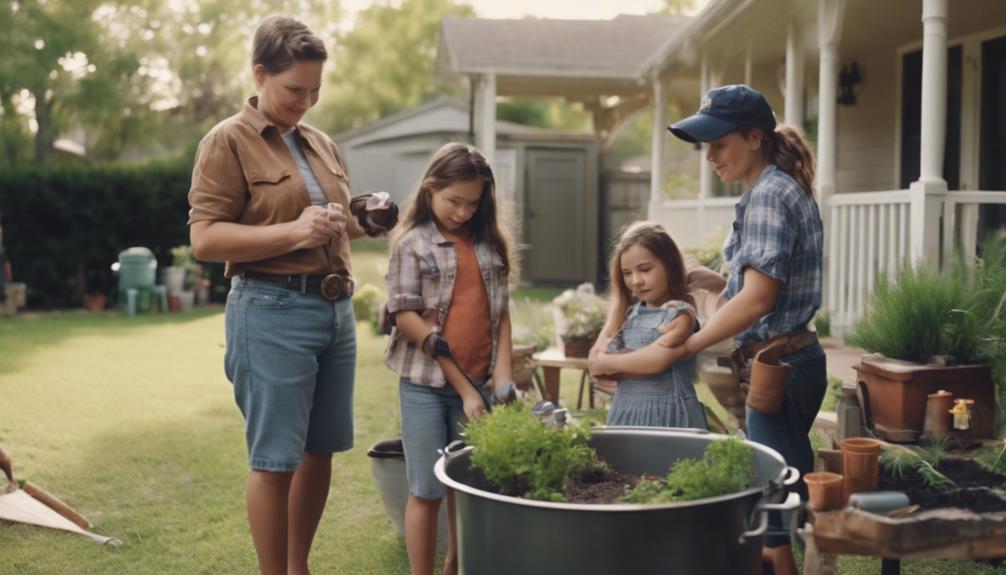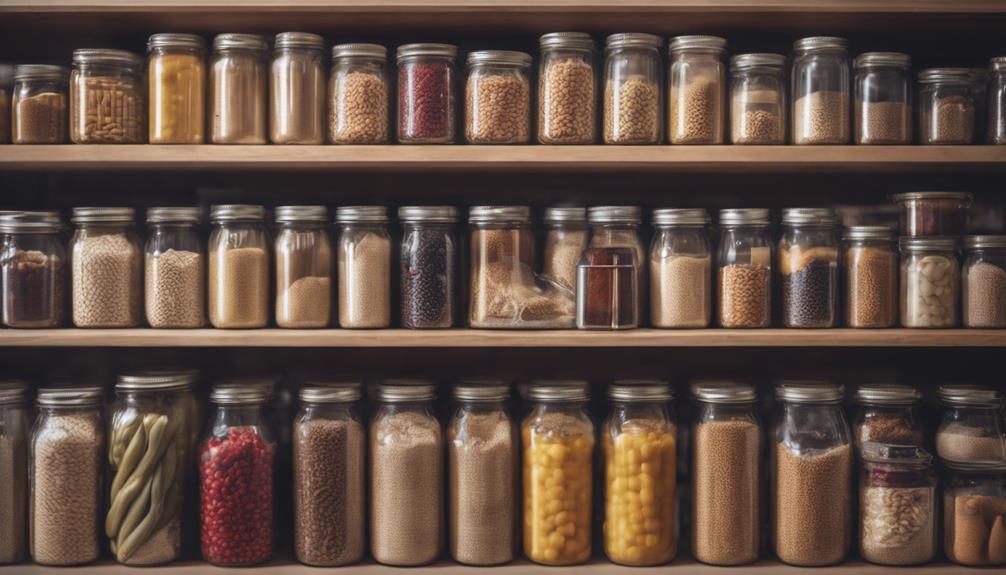Enhance your emergency readiness with 'Texas Preppers 2: The Ultimate Survival Guide for Texans!' Learn to navigate extreme weather, build a disaster kit, and master essential survival skills like handling fire ant stings effectively. Discover strategies for self-sufficiency, including the importance of generators and detailed disaster planning. Understand natural hazards, weather patterns, and emergency evacuation routes specific to Texas. Explore further into mental health considerations, community involvement, and the significance of gas masks and firearms. Explore this ultimate guide for Texans to bolster your preparedness and survival skills.
Key Takeaways
- Master essential survival skills tailored for Texas.
- Prepare for natural disasters, power outages, and pandemics.
- Emphasize having a generator and detailed disaster planning.
- Discuss gas masks, bomb shelters, and firearms for self-sufficiency.
- Address mental health and community involvement in survival readiness.
Preparing for Extreme Weather
To prepare for extreme weather in Texas, gather essential supplies for your emergency kit. Given the state's susceptibility to hurricanes, floods, and tornadoes, disaster preparedness is essential.
Texas experiences scorching summers exceeding 100°F, making it important to have adequate provisions in case of emergencies. Flash floods are a common occurrence, especially in low-lying regions and near water bodies. Additionally, being part of Tornado Alley, Texas faces frequent tornado threats, necessitating readiness at all times.
Your emergency kit should include items like water, non-perishable food, first aid supplies, flashlights, batteries, a weather radio, and any necessary medications. These essentials can be a lifeline during extreme weather events when resources may be scarce.
Make sure your kit is easily accessible and up to date, checking expiration dates regularly and replenishing supplies as needed. By proactively preparing for disasters, you can protect yourself and your loved ones during Texas' unpredictable weather conditions.
Building a Disaster Kit

Prepare a thorough disaster kit by assembling essential items that cater to your family's specific needs and potential emergency scenarios. Include basics such as water, non-perishable food, first aid supplies, and important documents in your emergency management plan.
Additionally, consider adding items like flashlights, batteries, a multi-tool, blankets, and personal hygiene products to guarantee you're well-equipped for various situations. Customize your disaster kit by including medications, pet supplies, and infant necessities if applicable to your family.
Remember to rotate perishable items regularly and check expiration dates on food and medication to maintain readiness. Store your disaster kit in a designated, easily accessible location and ensure all family members know where it's kept.
Being proactive in building a thorough disaster kit will help you and your loved ones be better prepared for unexpected events and emergencies.
Essential Survival Skills

Acquiring essential survival skills is paramount for maneuvering potential threats in the Texan wilderness. In emergencies, knowing how to handle fire ant stings is vital. Fire ants sting when disturbed, so staying calm is key to prevent further attacks. If bitten, dabbing a weak bleach solution on the affected area within 10-15 minutes can prevent blister formation. Applying ice can help numb the pain and reduce swelling.
Additionally, encountering killer bees requires specific knowledge. These bees, also known as Africanized honeybees, can be aggressive when threatened. It's important not to swat at them as this can aggravate the bees further.
In a survival situation, having a cell phone can be a lifeline. Make sure your phone is charged and has emergency contacts saved. Knowing how to utilize your cell phone for navigation, communication, and accessing essential information can greatly aid in your survival efforts in the Texan wilderness.
Navigating Natural Hazards

When facing natural hazards in Texas, it's essential to be prepared for any weather event and know the emergency evacuation routes in your area.
Understanding weather patterns and having a plan in place can make a significant difference in your safety during emergencies.
Stay informed, stay alert, and be ready to navigate through any challenges that may come your way.
Weather Preparedness Tips
Getting through Texas' diverse natural hazards requires a strategic approach to weather preparedness. Central Texas, like other regions in the state, faces a range of weather challenges such as tornadoes, hurricanes, floods, and droughts. To stay safe and prepared, consider the following weather preparedness tips:
| Weather Hazard | Preparedness Tip |
|---|---|
| Tornadoes | Have a designated safe room or shelter in your home. |
| Stay informed of tornado watches and warnings. | |
| Hurricanes | Create a hurricane preparedness kit with essentials. |
| Know your evacuation routes and have a plan in place. | |
| Floods | Avoid camping or parking near rivers during heavy rains. |
| Be ready to move to higher ground if flooding occurs. | |
| Droughts | Conserve water by fixing leaks and reducing usage. |
| Plan ahead for water shortages by storing extra water. |
Emergency Evacuation Routes
To effectively navigate Texas' natural hazards and guarantee your safety during emergencies, understanding the designated evacuation routes is essential. These routes, meticulously planned to facilitate efficient and safe evacuation during hurricanes, floods, and wildfires, play an important role in disaster preparedness.
Residents are encouraged to acquaint themselves with these designated paths, as they're indispensable for timely and secure evacuation. Evacuation route maps, readily available to the public and routinely updated, provide real-time information to aid residents in times of crisis.
By familiarizing yourself with these routes and having emergency kits prepared for swift evacuation, you can greatly increase your chances of survival and reduce risks during disasters.
Just as in other places like Hong Kong, where designated evacuation routes are critical for emergency response, knowing your way to safety in Texas can be a life-saving skill. Stay informed, stay prepared, and stay safe by being proactive in understanding and utilizing these designated evacuation routes.
Self-Sufficiency Strategies

In Texas Preppers 2, diving into self-sufficiency strategies involves honing essential survival skills tailored specifically for Texans facing diverse disaster scenarios. The book explores preparing for natural disasters, power outages, pandemics, and communication breakdowns.
A key aspect that readers really liked is the emphasis on having a generator, detailed disaster planning, and engaging in community efforts for emergency preparedness. Additionally, Texas Preppers 2 discusses the significance of equipment like gas masks, bomb shelters, and firearms as critical tools for disaster preparedness in the region.
Mental health considerations, community involvement, and advocacy for emergency preparedness in Texas are also addressed in the book. By providing detailed information and practical advice, Texas Preppers 2 equips Texans with the knowledge and skills necessary to be self-sufficient during challenging times, fostering resilience and preparedness within the community.
Emergency Response Planning

Effective emergency response planning involves anticipating and preparing for a range of potential disasters and crises, ensuring readiness for any situation that may arise.
This planning is essential for addressing natural disasters like hurricanes, floods, and power grid failures. Additionally, thorough disaster planning encompasses scenarios such as uncontrollable pandemics, global communication breakdowns, and scarcity of essential supplies.
To enhance emergency preparedness, essential equipment like gas masks, bomb shelters, and firearms are recommended for various disaster situations. Community engagement and mental health considerations also play a significant role in practical readiness and balancing extreme prepping with family well-being.
Advocacy for emergency preparedness emphasizes individual responsibility, staying informed, and acquiring essential skills for self-sufficiency. By incorporating these elements into your emergency response planning, you can better prepare yourself and your community for unforeseen challenges and emergencies.
Frequently Asked Questions
How Can I Involve My Children in Emergency Response Planning?
To involve your children in emergency response planning, start by discussing potential risks and safety procedures in an age-appropriate manner.
Conduct drills regularly to practice evacuations, first aid, and communication plans.
Encourage them to create personal emergency kits with essential items.
Teach them how to use emergency contacts and where to find help.
What Are the Best Self-Sufficiency Strategies for Urban Texans?
When it comes to self-sufficiency strategies for urban Texans, focusing on water conservation is crucial. Growing your own food in small spaces like container gardens or vertical planters is another effective strategy. Learning basic repair skills for household items can also be helpful.
Additionally, having emergency supplies readily available is essential. This includes non-perishable food and a first aid kit to help you be prepared for unexpected situations in an urban environment.
Can I Use Technology to Enhance My Disaster Kit?
Yes, technology can greatly enhance your disaster kit. Incorporating items like solar-powered chargers for your devices, GPS navigation systems, portable water purifiers, and emergency alert apps can provide vital information and communication during disasters.
Ensuring your technology is durable, waterproof, and regularly charged will maximize its utility in emergency situations. Additionally, storing important documents and emergency contacts digitally on cloud storage can serve as a backup in case physical copies are lost or damaged.
Are There Specific Survival Skills Unique to Texas Terrain?
When exploring the varied terrain of Texas, specific survival skills prove essential. Understanding how to locate water sources in arid regions, identifying venomous snakes, and recognizing signs of heat exhaustion are vital.
Familiarity with local flora for foraging and crafting shelter from the elements are also valuable skills. These unique abilities, honed through practice and education, will enhance your preparedness for any situation in the Texan wilderness.
How Can I Prepare for Extreme Weather Without Breaking the Bank?
To prepare for extreme weather without straining your finances, focus on essential items like a weather radio, emergency supplies, and a reliable water source.
Utilize free resources like weather alert apps and community emergency plans to stay informed.
Invest in durable, multi-purpose gear that can withstand various weather conditions.
Prioritize safety measures such as reinforcing your home's structure and creating an emergency evacuation plan.
Planning ahead can help mitigate costs while ensuring preparedness.
What Are Some Survival Tips Specifically for Texans?
When it comes to surviving in Texas, it’s essential to be prepared for extreme weather and natural disasters. Texans can benefit from visiting the best preppers websites bookmark now for tips on stockpiling emergency supplies, creating a survival plan, and staying informed about potential threats in the region.
Conclusion
In summary, being prepared for emergencies is vital for Texans. While it may seem intimidating, taking small steps like building a disaster kit and learning essential survival skills can make a big difference in times of crisis.
Remember, it's better to be safe than sorry. So, don't wait until disaster strikes to start preparing.
Stay informed, stay ready, and stay safe. Your future self will thank you.










